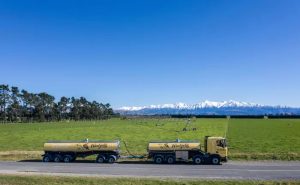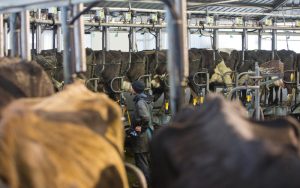
But whether that cream will be skimmed off by rocketing inflation before the farmers get to take a bite remains to be seen.
The boost in the average international price of whole milk powder comes just weeks after Fonterra lifted its forecast milk payment to a new record level of between $8.90 and $9.50 per kilogram of milk solids – equating to a $13.8 billion contribution to the nation’s economy.
Milk powder gained 4.2 per cent to US$4503 (NZ$6649) a tonne, the highest level since 2013. Whole milk powder has gained 16.5 per cent over the last three auctions and is sitting 25 per cent higher than at the same time last year.
Overnight on Tuesday the index reached 1516, just shy of the all-time record of 1573 set in April 2013. Prices rose more than 4 per cent for the third consecutive fortnightly auction.
Federated Farmers’ Waikato dairy chairman Andrew Reymer reckoned a good portion of the milk money would be soaked up on the farm, with “agricultural inflation” estimated to be soaring at between 30 and 40 per cent.
“You think it’s bad in the supermarket, but farmers are having to deal with rampant cost increases. Any time we get good financial news it’s usually the signal for agricultural suppliers to put their costs up.”
While the index figures were symptomatic of ongoing good times for the industry, Reymer said they would be mainly of academic interest to Waikato farmers, with little tangible impact on their coffers.
“[The figures are] probably best described as a marker for what the milk price is going to be. Fonterra announced the milk price a couple of weeks ago, and this announcement does not really make one cent of difference on the farm.
“But the figure is a good one and it should give farmers confidence that the milk price will probably strengthen again next season.
“Think of it as a green light that you can see a little bit further down the street.”
Infometrics principal economist Brad Olsen had a similar view.
“You can’t blame the farmers for not exactly jumping for joy. The index payment is a dollop of cream on the top of a pretty good year for the sector, but the very high inflation rate is going to skim most of that cream off.
“The costs of fertiliser and feed are making things very difficult. The other thing is that it’s getting really tough to find workers. There’s a lot of work to go round, but fewer people to do it.”
North Waikato dairy farmer Andrew Allen described the price index bump on the heels of the milk payment as “fantastic news”, and doubted it would be entirely negated by inflation.
“It will allow us to buy a few things we need and share the wealth with the workers a bit more as well … My guys would have got an inflation-based wage rise anyway, but it all helps.”
Usually when the global price index got too high other countries – mainly the United States – would temper the demand “by simply turning the milk tap on,” Allen said.
“For a variety of reasons they have not been able to do that as quickly this time. They are under a lot of different kinds of pressure at the moment, just like the farmers here.”
Fellow farmer Johan Van Ras, from Morrinsville, also declared the price index announcement to be “really good news … the whole agricultural industry is experiencing really good times at the moment. It’s great to see.
“Of course, you don’t want to skite too much about how well you are doing because there are a whole bunch of people in other industries who are doing it really tough at the moment. You have to feel really sorry for the guys in the tourism sector.”























